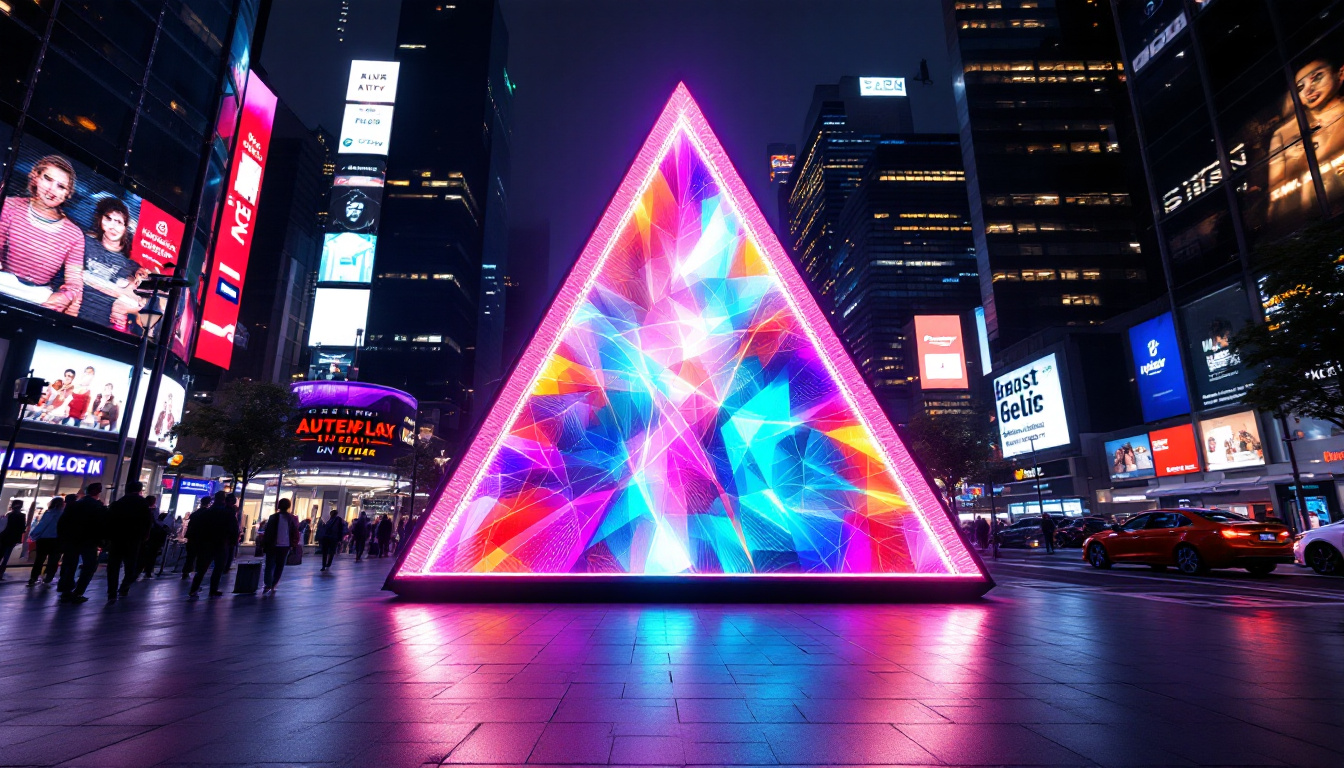In the realm of modern technology, displays play a crucial role in how we interact with devices. Among the various types of displays, LCD (Liquid Crystal Display) and LED (Light Emitting Diode) technologies have become predominant in consumer electronics. Understanding these technologies, their differences, and their applications is essential for anyone looking to make informed decisions about their display needs.
Understanding LCD Technology
LCD technology utilizes liquid crystals to produce images on a screen. These crystals are sandwiched between two layers of glass or plastic, with a backlight illuminating the display. The manipulation of light through these crystals allows for the creation of vibrant images and colors. The evolution of LCD technology has been remarkable, transitioning from bulky, low-resolution displays to sleek, high-definition screens that are now commonplace in our daily lives. This transformation has opened up new possibilities in various fields, including entertainment, education, and professional applications.
How LCD Works
At its core, an LCD operates by controlling the amount of light that passes through the liquid crystals. When an electric current is applied, the crystals align in such a way that they either block or allow light to pass through. This process creates the images we see on the screen. The backlight, typically fluorescent or LED, provides the necessary illumination for the display. The precision of this alignment is crucial; even slight variations can lead to color inaccuracies or image distortions. This is why advancements in pixel technology, such as the introduction of high pixel density and improved backlighting techniques, have been essential in enhancing the overall viewing experience.
Types of LCD Displays
There are several types of LCD displays, each with unique characteristics. The most common types include Twisted Nematic (TN), In-Plane Switching (IPS), and Vertical Alignment (VA). TN panels are known for their fast response times, making them ideal for gaming. IPS panels, on the other hand, offer better color accuracy and wider viewing angles, making them suitable for graphic design and media consumption. VA panels provide excellent contrast ratios, which enhance the depth of images. Additionally, there are variations like Super LCD (SLCD) and Advanced Fringe Field Switching (AFFS) that aim to combine the strengths of these technologies, catering to specific market needs and preferences.
Advantages and Disadvantages of LCD
LCD displays come with their own set of advantages and disadvantages. One of the primary benefits is their energy efficiency, especially when compared to older technologies like CRT (Cathode Ray Tube) displays. Additionally, LCDs are generally lighter and thinner, making them more portable. However, they may suffer from limited viewing angles and slower response times compared to some newer technologies. Furthermore, while LCDs are less prone to screen burn-in than OLED displays, they can still experience issues like image retention under certain conditions. As technology progresses, manufacturers are continually working to mitigate these disadvantages, leading to innovations that enhance performance and user satisfaction.
Exploring LED Technology
LED technology is often associated with LCD displays, as it serves as the backlighting source for many modern LCD screens. However, LED displays can also refer to screens that use LEDs as the primary light-emitting source, such as OLED (Organic Light Emitting Diode) displays. OLED technology, in particular, has gained significant traction in recent years, thanks to its ability to produce true blacks and vibrant colors by allowing individual pixels to turn off completely. This capability not only enhances the visual experience but also contributes to energy savings when displaying darker images.
How LED Works
LEDs are semiconductor devices that emit light when an electric current passes through them. In display technology, LEDs can be used in two main configurations: edge-lit and full-array. Edge-lit LEDs are placed around the perimeter of the screen, while full-array LEDs are distributed across the entire display, allowing for more precise control of brightness and contrast. Full-array setups often incorporate local dimming technology, which enables specific areas of the screen to dim or brighten independently, further enhancing the overall picture quality. This is particularly beneficial for creating depth in images, especially in scenes with both bright highlights and deep shadows.
Benefits of LED Displays
LED displays offer several advantages over traditional LCDs. They provide higher brightness levels, improved color accuracy, and better contrast ratios. This results in more vibrant images and a more immersive viewing experience. Additionally, LED technology is more energy-efficient, leading to lower power consumption and longer lifespan. The longevity of LED displays is a crucial factor for consumers, as they typically last tens of thousands of hours, significantly outpacing older technologies like CRTs. Moreover, the reduced heat output from LEDs means less strain on cooling systems, making them ideal for use in various environments, from homes to commercial spaces.
LED vs. LCD: Key Differences
While LED displays are often categorized under the broader LCD umbrella, there are key differences between the two. LED displays typically offer better performance in terms of brightness and color reproduction. Furthermore, LED technology allows for thinner and lighter designs, making them more appealing for modern consumers. The advancements in LED technology have also led to the development of flexible and curved displays, which can adapt to various viewing environments and preferences. This innovation opens up new possibilities for design and functionality, allowing manufacturers to create screens that fit seamlessly into different settings, whether it be a home theater or a commercial advertising display.
The Evolution of Display Technology
Over the years, display technology has evolved significantly, driven by advancements in materials and manufacturing processes. From the bulky CRT monitors of the past to the sleek, high-definition displays of today, the journey has been remarkable.
From CRT to LCD and LED
The transition from CRT to LCD and LED technologies marked a significant milestone in the evolution of displays. CRTs were heavy, bulky, and consumed a lot of power. In contrast, LCDs offered a more compact and energy-efficient solution. The introduction of LED backlighting further enhanced LCD technology, leading to brighter and more vibrant displays.
Future Trends in Display Technology
As technology continues to advance, the future of display technology looks promising. Innovations such as MicroLED and OLED are gaining traction, offering even greater color accuracy, contrast, and energy efficiency. These technologies are poised to redefine the way we experience visual content, from televisions to smartphones.
Applications of LCD and LED Displays
The versatility of LCD and LED displays allows them to be used across various industries and applications. From consumer electronics to commercial displays, these technologies have become integral to modern life.
Consumer Electronics
In the realm of consumer electronics, LCD and LED displays are ubiquitous. They can be found in televisions, computer monitors, smartphones, and tablets. The demand for high-definition displays has driven manufacturers to improve resolution, color accuracy, and overall performance, catering to the needs of consumers.
Commercial and Industrial Use
Beyond consumer electronics, LCD and LED displays are widely used in commercial settings. digital signage, for instance, relies on these technologies to convey information and advertisements in retail environments. Additionally, industrial applications such as control panels and monitoring systems utilize LCD and LED displays for their reliability and clarity.
Healthcare and Medical Devices
In the healthcare sector, LCD and LED displays play a vital role in medical imaging and monitoring devices. High-resolution displays are essential for accurately interpreting medical images, while LED technology enhances visibility in various medical applications. This ensures that healthcare professionals have access to clear and precise information when making critical decisions.
Choosing the Right Display for Your Needs
When it comes to selecting the right display technology, several factors should be considered. Understanding the specific requirements of the intended application can help narrow down the options.
Resolution and Size
Resolution is a crucial factor in display technology. Higher resolutions, such as 4K and 8K, provide greater detail and clarity, making them ideal for tasks such as graphic design and video editing. Additionally, the size of the display should align with the intended use. Larger screens are often preferred for immersive experiences, while smaller screens may be more suitable for portability.
Color Accuracy and Brightness
For applications that require precise color reproduction, such as photography and graphic design, color accuracy is paramount. Displays with higher color gamuts and better calibration options are essential for achieving accurate results. Brightness levels also play a critical role, especially in environments with varying lighting conditions.
Budget Considerations
Finally, budget considerations are always a factor when choosing a display. While high-end displays offer superior performance, there are also budget-friendly options that provide satisfactory results for everyday use. Assessing the balance between performance and cost can help consumers make informed decisions.
Conclusion
In summary, understanding LCD and LED display technologies is essential for navigating the modern landscape of consumer electronics. Both technologies offer unique advantages and applications, making them suitable for various needs. As technology continues to evolve, staying informed about the latest advancements will empower consumers to make the best choices for their display requirements.
Whether for personal use, professional applications, or commercial purposes, the right display can significantly enhance the viewing experience. By considering factors such as resolution, color accuracy, and budget, individuals can select a display that meets their specific needs and preferences.
As we look to the future, the ongoing development of display technologies promises even more exciting possibilities, ensuring that the world of visual content continues to thrive and evolve.
Discover Cutting-Edge LED Displays with LumenMatrix
Ready to elevate your visual experience with the latest in display technology? Look no further than LumenMatrix, a pioneer in LED display innovation. From captivating Indoor LED Walls to dynamic Outdoor LED Displays, and from versatile Vehicle LED Displays to sleek LED Poster Displays, LumenMatrix offers an array of solutions tailored to your needs. Whether you’re looking to engage audiences with LED Sports Displays, make a statement with Floor LED Displays, or require Custom LED solutions, LumenMatrix is your partner in creating immersive visual experiences. Embrace the future of digital signage with our All-in-One LED Displays and LED Transparent Displays, designed to deliver your message with unparalleled impact. Check out LumenMatrix LED Display Solutions and transform the way you communicate visually.































